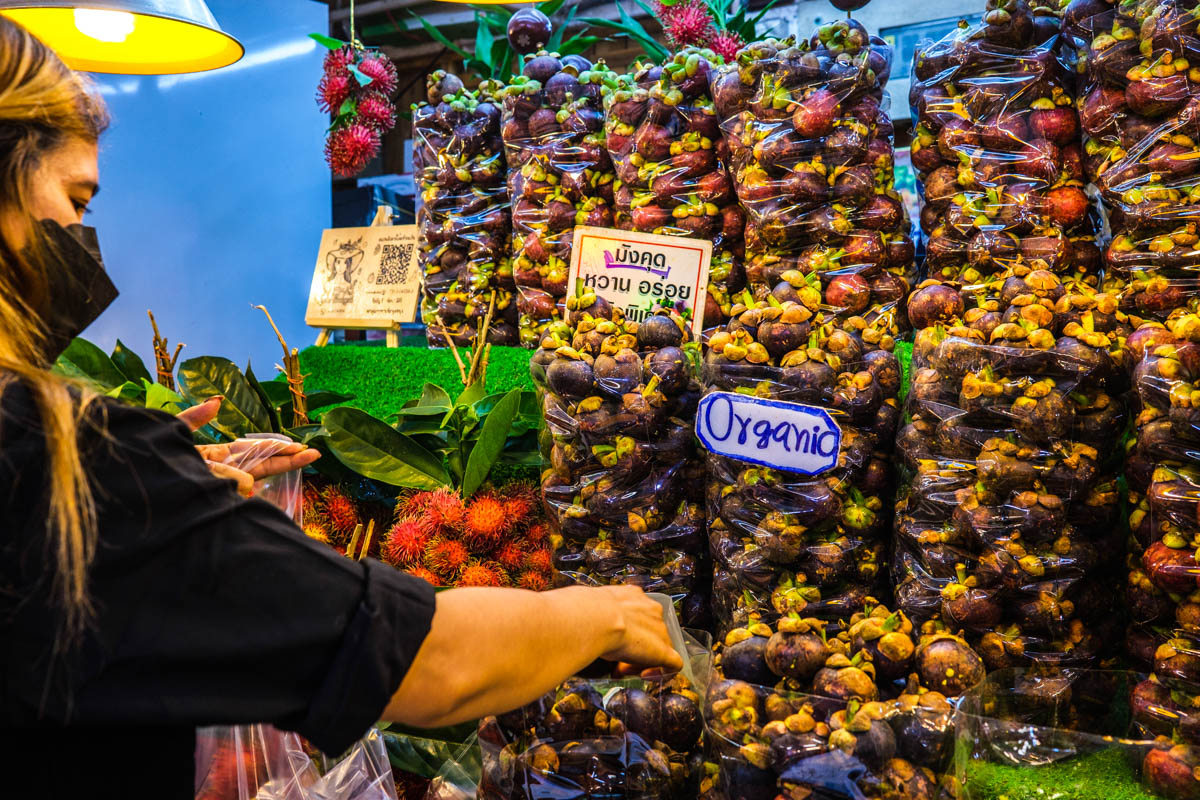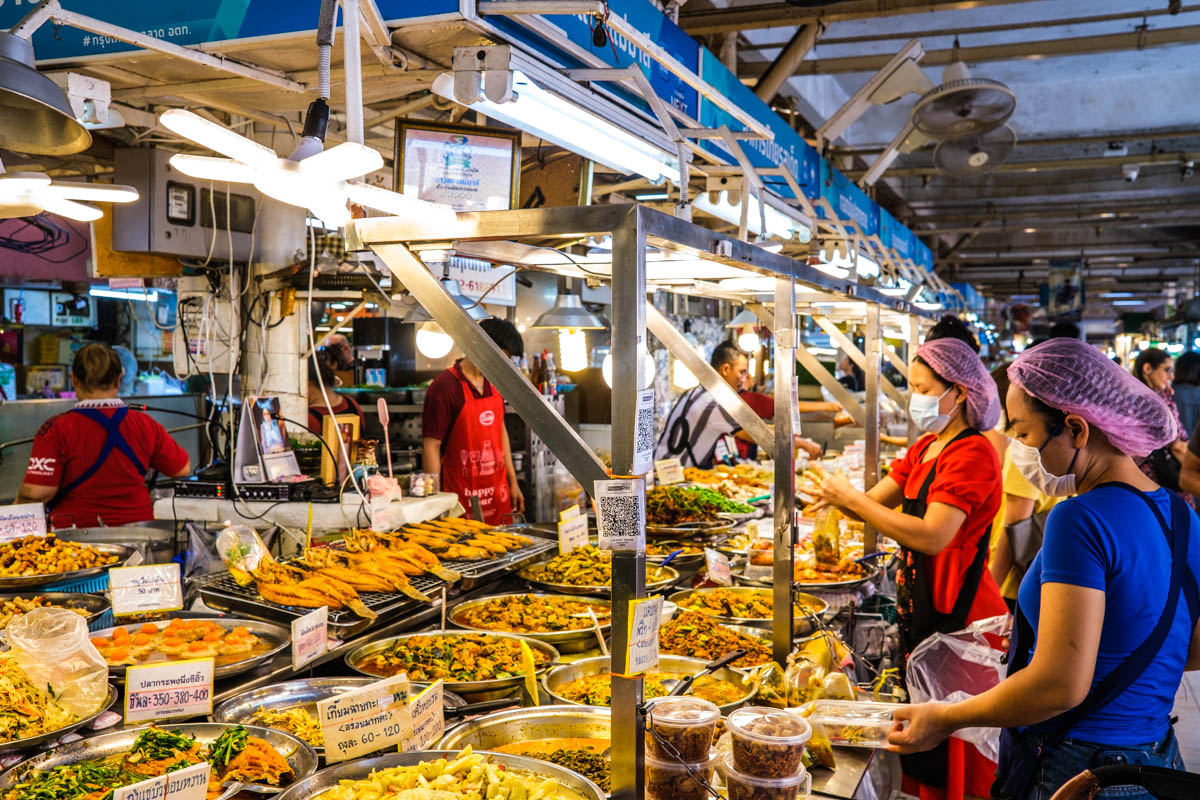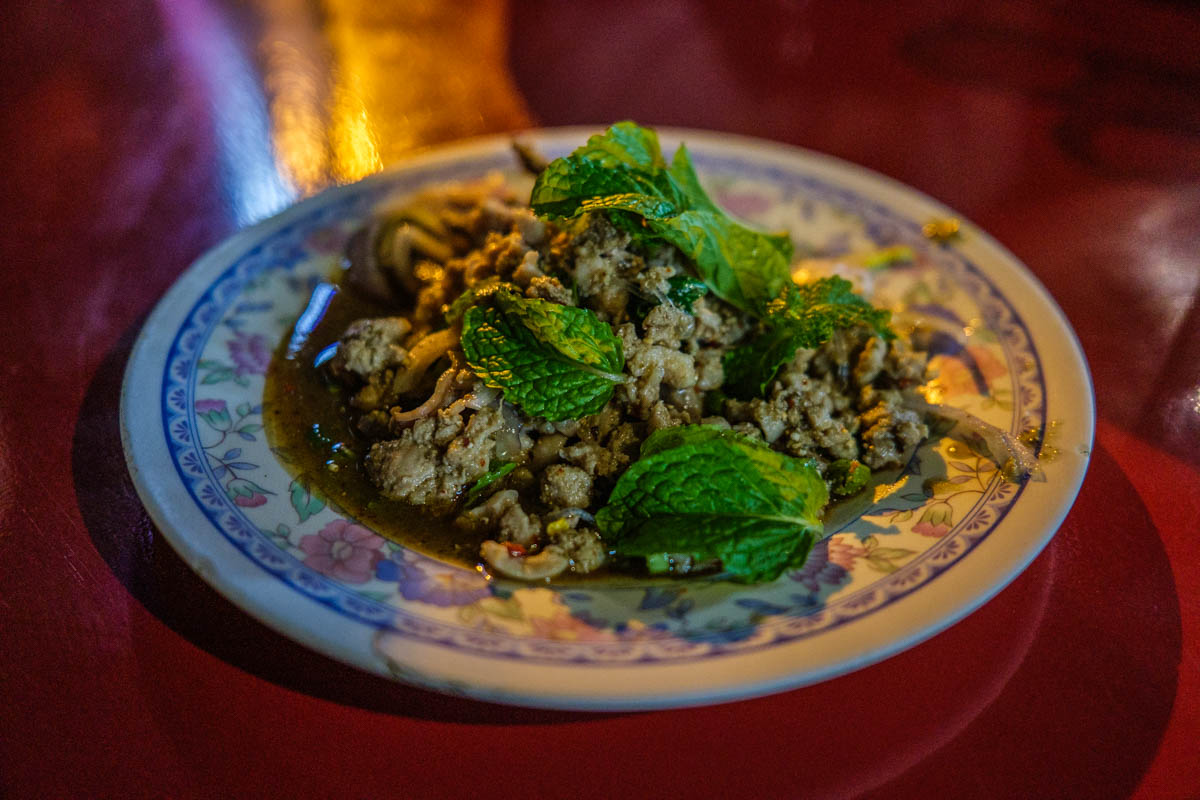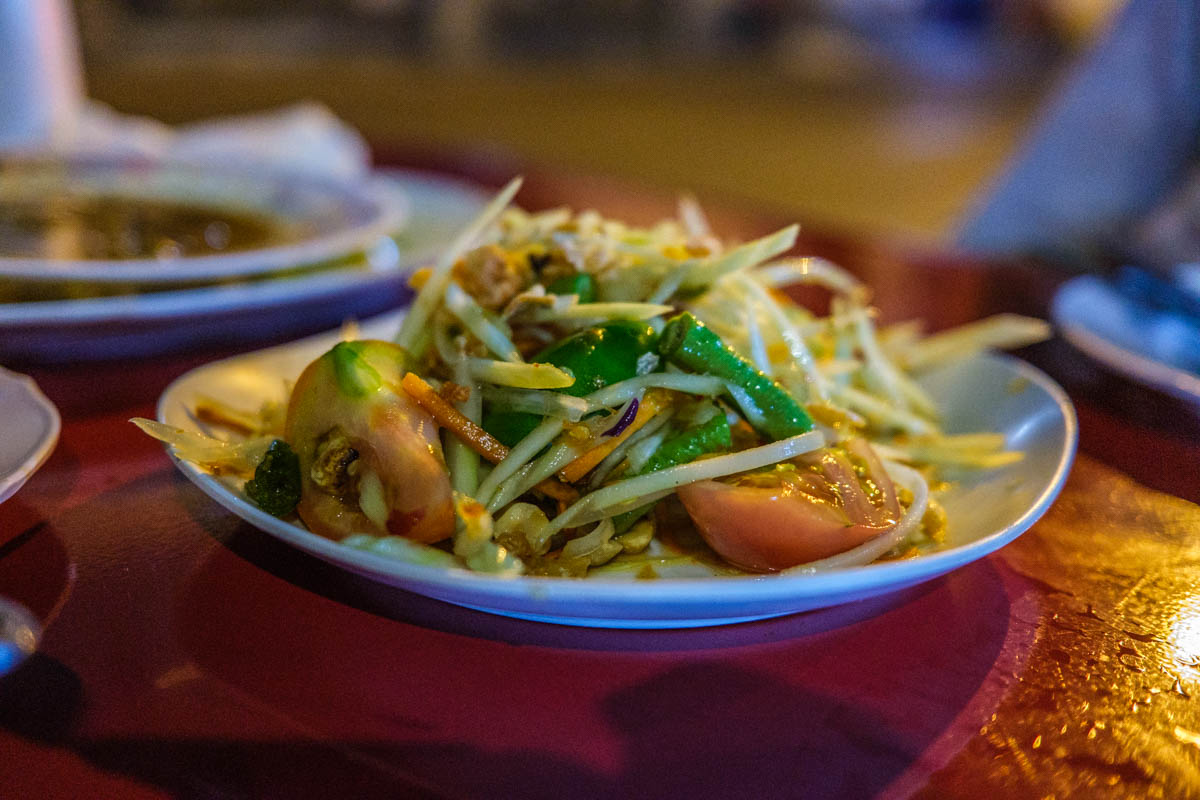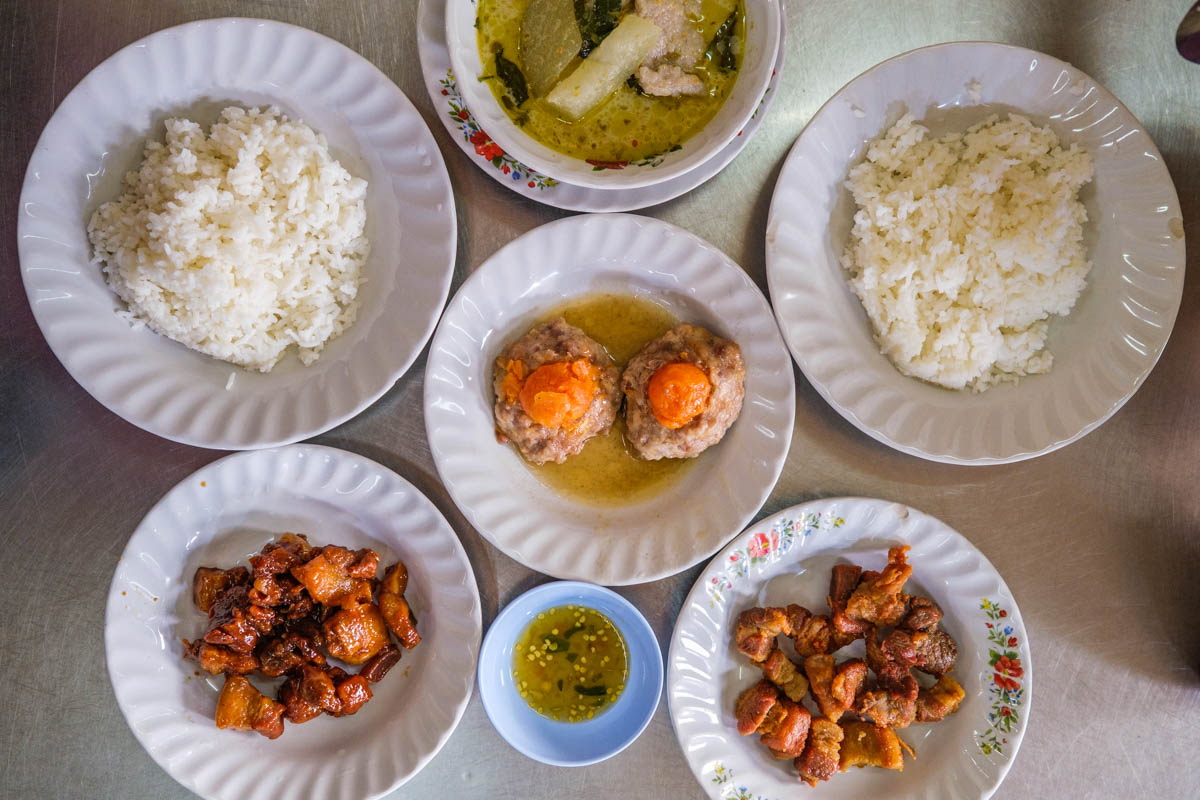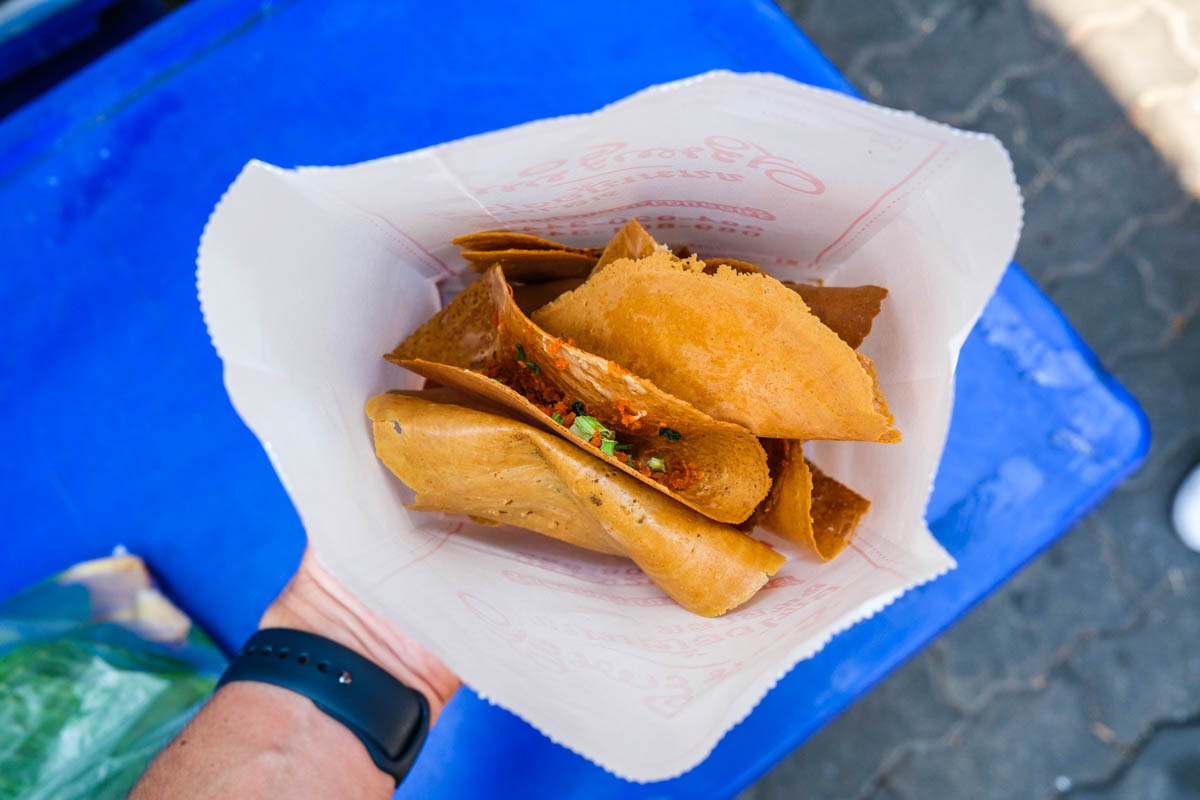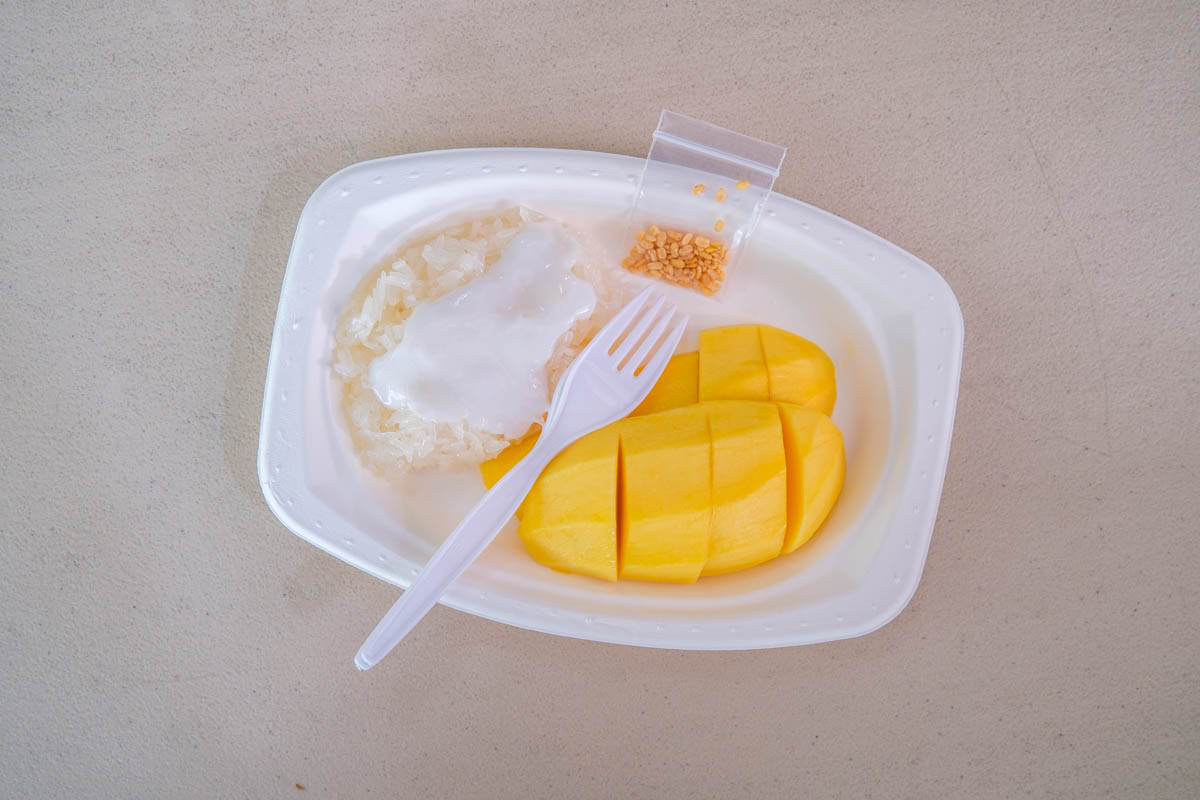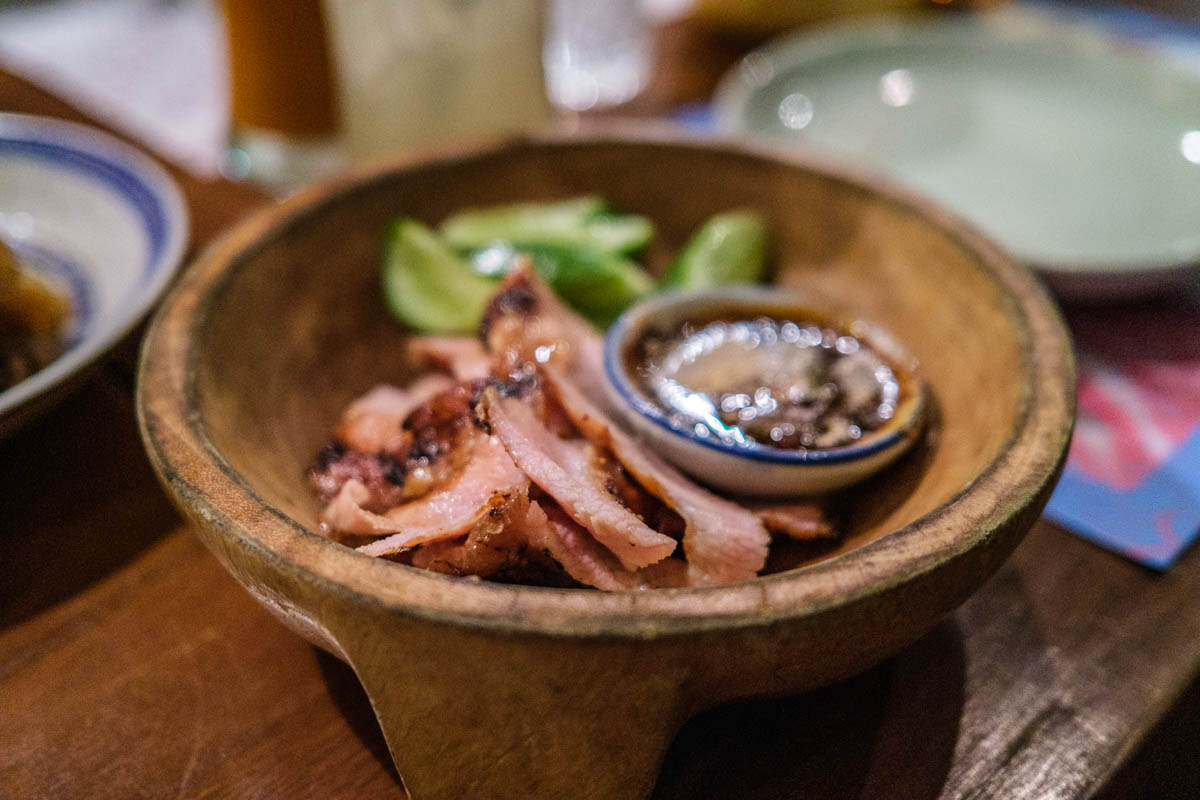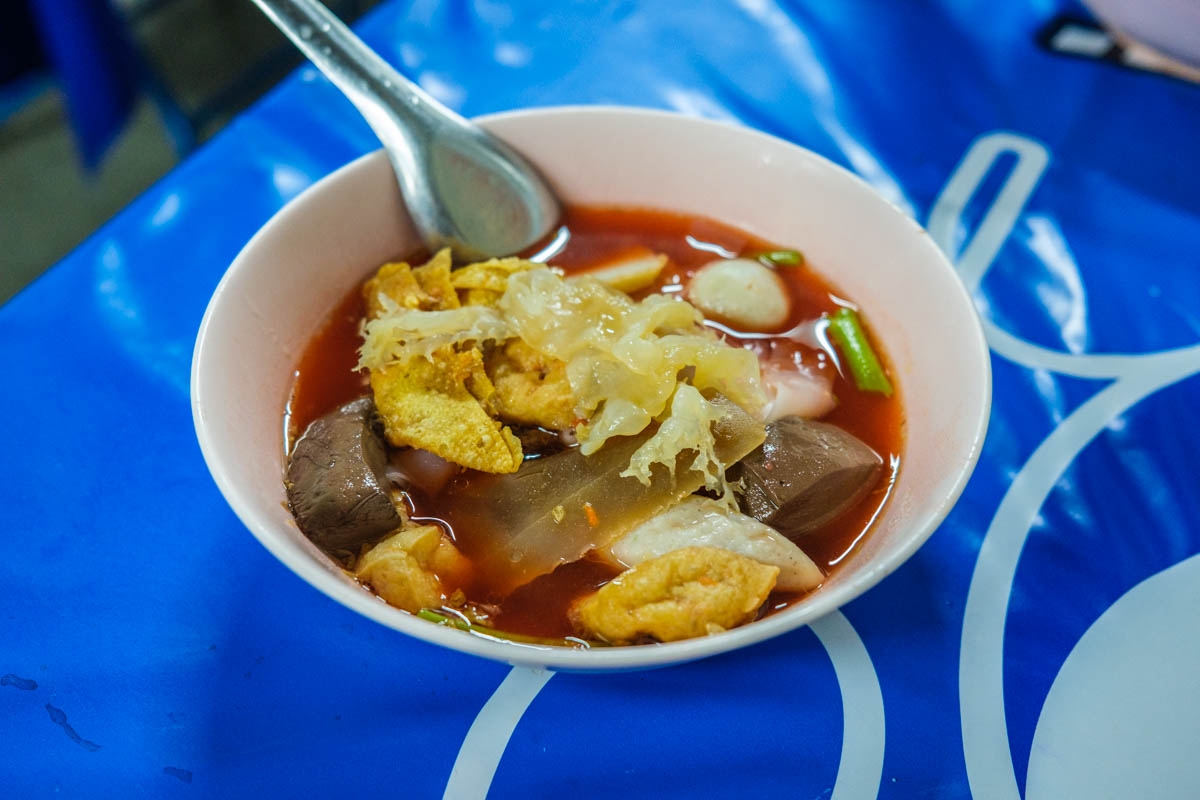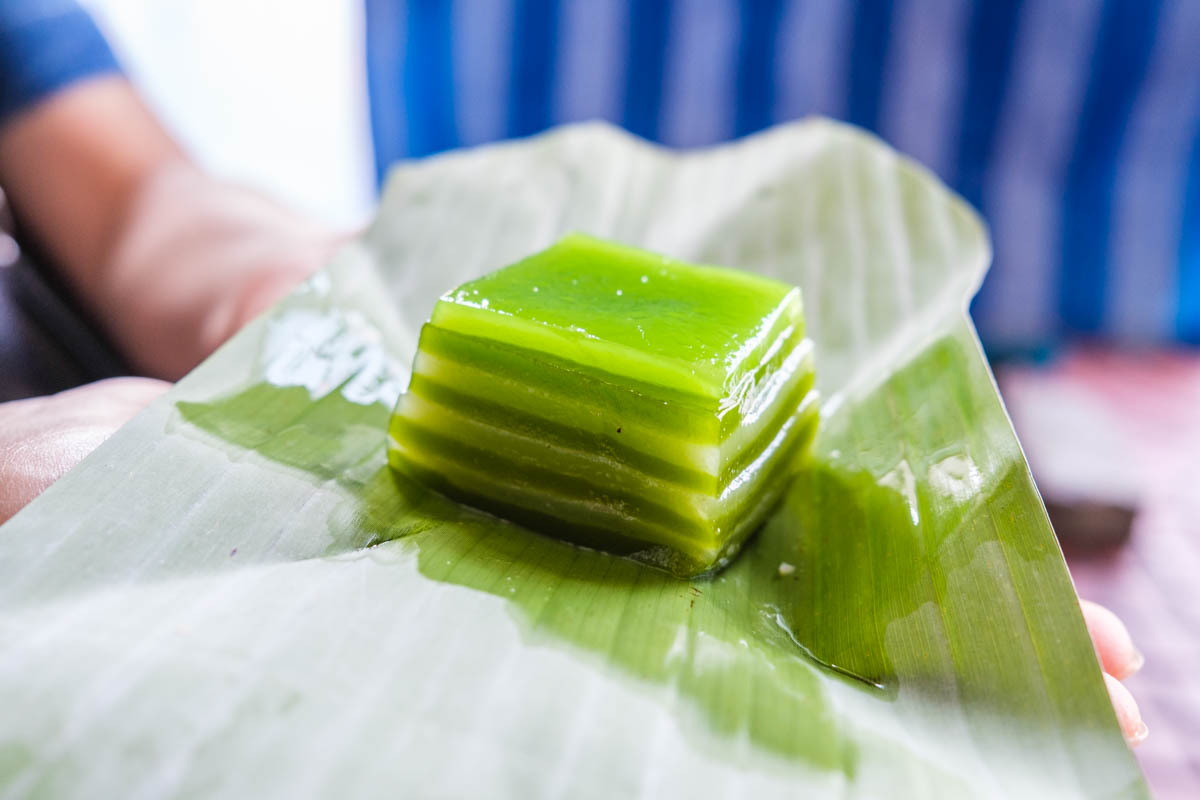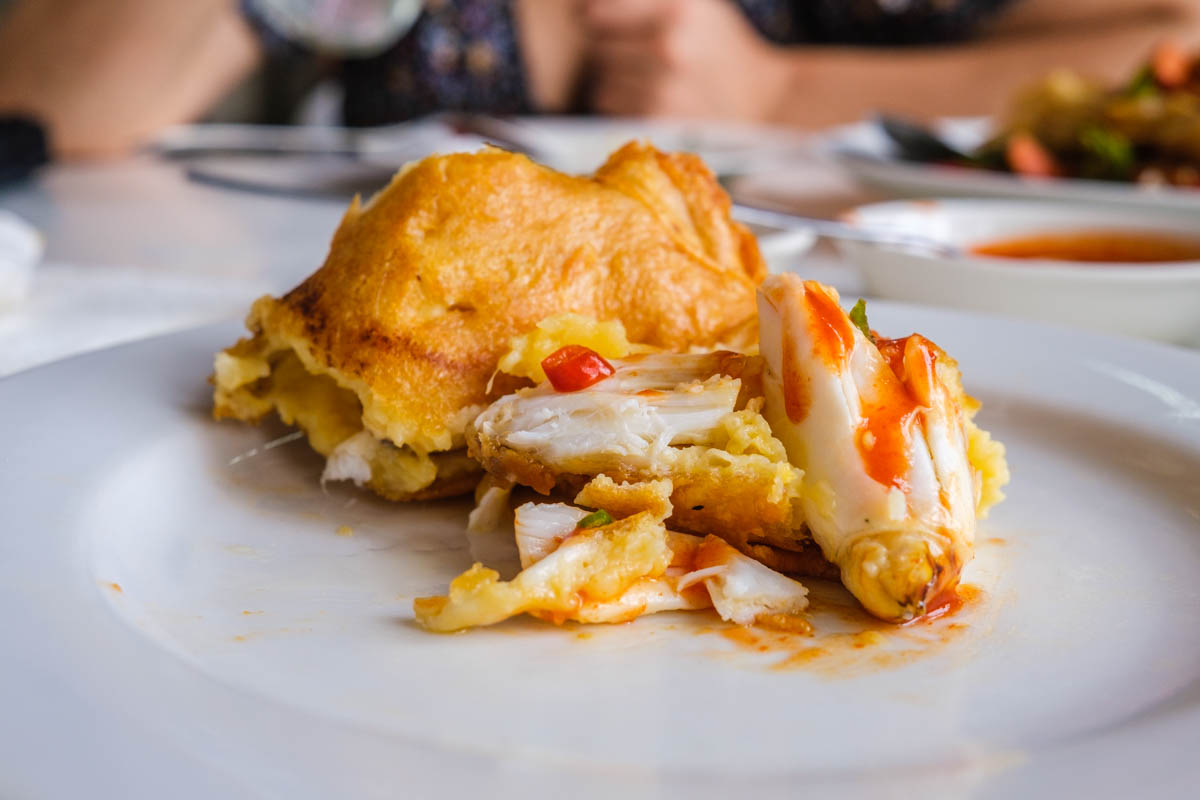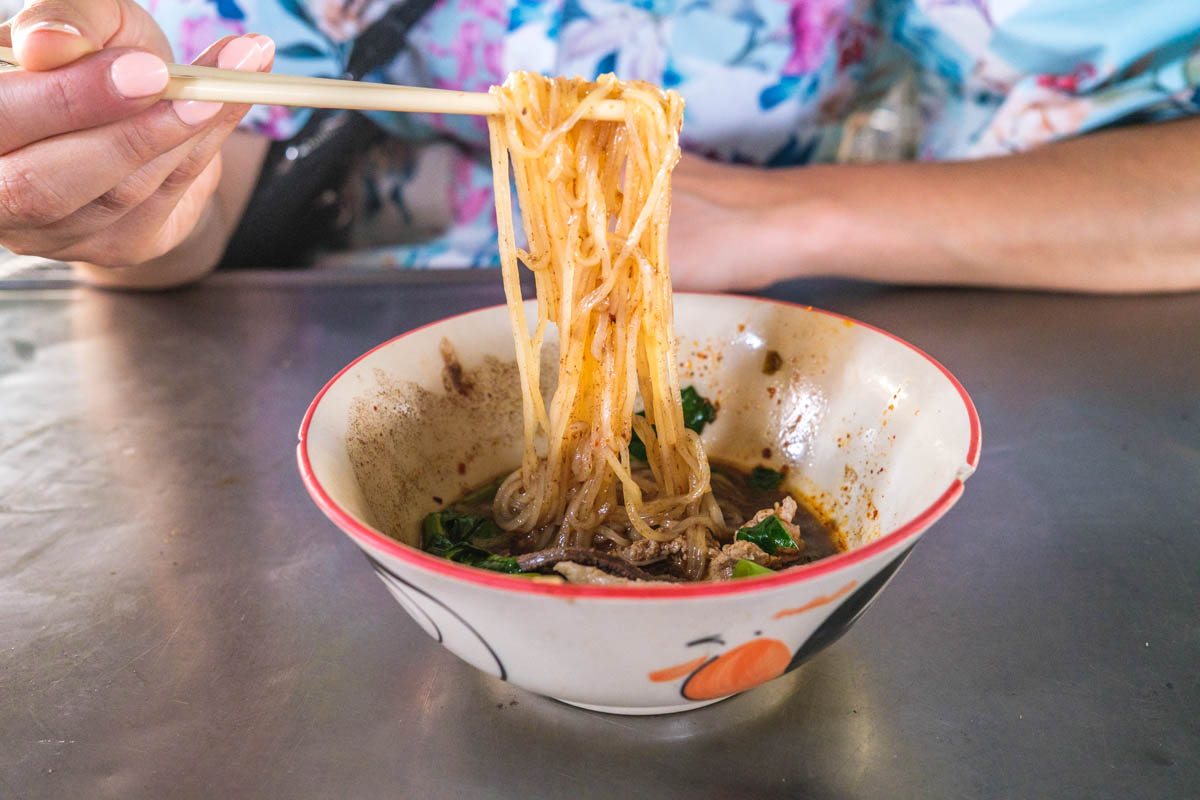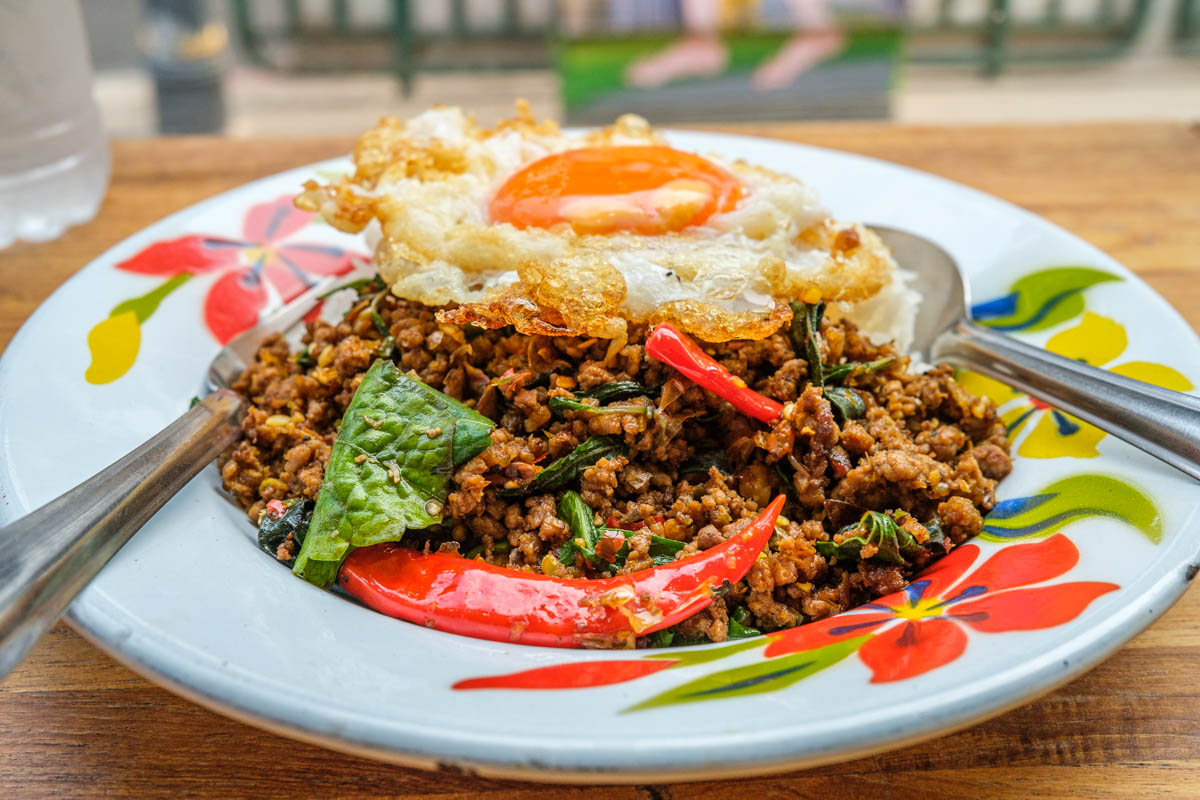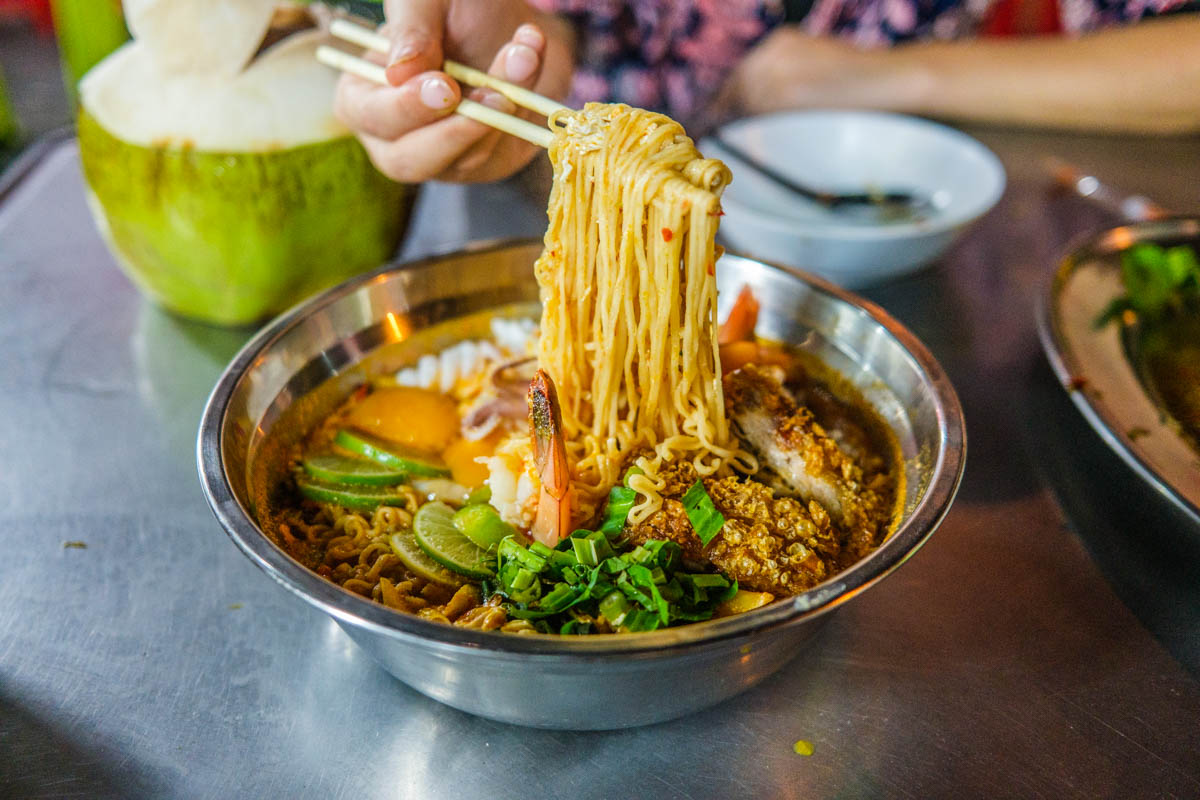BANGKOK | Thailand has a rich culinary history, with diverse regional dishes to be explored. Early influences come from the country’s Indian, Malay, and Indonesian neighbours, while more recent European influences are also apparent. Thai food takes all of these diverse influences to create something unique. Complex, balanced dishes that will excite your tastebuds and leave you eager to try more.
Here are some of the foods that you can expect to find when you’re visiting, and wondering what to eat in Thailand. This list is by no means extensive, rather it’s a list of some of my favourites, a mixture of popular must-try dishes and lesser known (in the West) delights. I encourage you to explore beyond the list and try as many things as you can while in Bangkok.
As well as specific dishes, I’ve included some of the place where you can enjoy these foods in Bangkok. For a full list on places to eat in Bangkok, check out my article, “Bangkok Food Guide: Where To Eat“.
Ba Mee Bpet
This comforting dish, popular at street vendors, features fresh egg noodles, in a light broth, topped with roasted duck. If you’re not in the mood for soup, order the ‘dry’ version – ba mee bpet haeng.
Cha Yen (Thai Iced Tea)
Thai iced tea is known for it’s vibrant orange colour and strong black tea flavour. It’s refreshing, fragrant, and can be enjoyed hot or cold from vendors across Bangkok. Visit traditional coffee shop Hia Tai Kee, to enjoy a cup of cha yen in a space that’s full of character.
Coconut Ice-Cream
Ice-cream made using coconut milk, rather than cow’s milk, is popular in Thailand. The creaminess comes from the coconut, with a lighter, more sorbet like texture than ‘regular’ ice-cream. It hits the spot on a hot Bangkok day. Natthaphon Coconut Ice Cream have been churning a top notch version of it for over 60 years.
Gai Tod
The Thai version of fried chicken is, unsurprisingly, delicious and popular across Bangkok. The Thai twist comes from the sweet and sour, slightly spicy dipping sauce it’s usually served with.
Geang Keow Wan Gai
This dish is well known outside Thailand by its English translation, sweet green chicken curry. Generally served with a bowl of steamed white rice, the dish features a rich coconut milk based curry, filled with chunks of chicken, round Thai eggplant, and chillies.
Gaeng Taypo
This sweet, sour, salty soup, often eaten as a curry with steamed white rice, is made by cooking dry salted fish in coconut milk with morning glory.
Hoy Tod
This oyster omelette is a popular Thai street food, that can be found at street vendors all over Bangkok. It’s a thick omelette, featuring an egg and sweet potato starch batter filled with small oysters. Its fried in pork lard for a crispy exterior, and topped with chilli sauce and lime juice.
Visit Nai Mong Hoi Thod for one of the best versions in town.
Jok
Usually eaten for breakfast, jok is Thaland’s version of congee. It’s a thick rice soup cooked with pork broth. It’s usually simply topped with an egg, and garnished with slices of ginger, spring onions, and pepper. Jok Prince do a top notch version of the dish.
Kaeng Hang Le
Also known as gaeng hanglay, kaeng hang le is a popular pork curry from Northern Thailand, with Myanmarese origins. Pork (usually belly) is marinated in an aromatic dry curry paste, then simmered with with ginger, pickled garlic, shallots, pickled garlic, and peanuts. It’s commonly served with long grain rice.
Kaeng Mus Sa Mun
Known in English as massaman curry, this popular Southern Thai dish combines Indian, Persian, and Malay influences to wonderful effect. The flavours of all three influences are apparent. Spices like cinnamon, nutmeg, and cloves, meld with lemongrass, galangal, and shrimp paste. The rich, coconut cream broth usually contains chicken or beef, and potatoes.
Kaeng Som
Also known as gaeng som, kaeng som is a sour fish soup with vegetables. Sourness comes from tamarind, while palm sugar is used to sweeten the curry. The Northern version highlights the sweet and sour components, while the Southern version includes turmeric and chillies.
Sanguan Sri and The Originals Mae On’s Curry Over Rice at Saphan Han are great places to try kaeng som, along with many other traditional soups and curries.
Khanom Bueang
They might be called Thai crepes in English, but khanom bueang aren’t your typical crepes. A popular street food snack, they’re crispy, taco-like shells, filled with sweet and savoury ingredients like meringue, shredded coconut, foi thong (strips of fried eggs or egg yolks), or chopped spring onions.
Sarinthip Thai Dessert Shop Taladplu has been making the dessert for four generations. Be sure to visit them.
Khanom Chan
Khanom chan is a layered dessert made from tapioca flour, rice flour, and coconut milk. Similar to Malaysian kueh, there are many flavours of the dessert, depending on the additional ingredients used. Things like pandan, jasmine flowers, and butterfly pea are popular.
You can find fantastic versions of it, along with a full assortment of other traditional Thai desserts, at the popular Talat Phlu Dessert Shop.
Khao Moo Tod Gratiem
This simple snack consists of pieces of diced pork, deep fried with a lot of garlic, and soy sauce. It’s perfect served over steamed rice with a fried egg.
Khao Niew Mamuang
More commonly known outside of Thailand by its English name, mango stick rice, khao niew mamuang is Thailand’s favourite dessert. It consists of sticky rice cooked with coconut milk, topped with fresh sliced mangoes and roasted mung beans and sesame seeds for crunch. It can be found all over Bangkok.
The version at the famed Kor Panich is delicious, as is the one at my favourite spot, Mae Varee Mango Stick Rice.
Khao Tom Mud
This dessert sees young bananas stuffed into sweetened sticky rice and coconut milk mixture, which is then wrapped in banana leaves and steamed. It stores conveniently in the banana leaf wrapping, so you can enjoy whenever you want during the day.
Kor Moo Yang
Popular Issan snack, kor moo yang, or Thai grilled pork neck, can be easily found in Bangkok. The combination of lean meat and juicy fat, marinated and grilled over charcoal, is wonderful. Similarly to moo ping, it’s commonly enjoyed with stick rice.
Also try yam kaw moon yang, which sees the pork mixed in as a salad with chillies, onions, and lime juice.
Kuay Teow Reua
Originally served from vendors in boats in the 1940s, kuay teow reua, or boat noodles as they’re commonly known, are a simple, affordable dish. It’s a strong pork and beef broth, seasoned with dark soy sauce, and pig or cow blood mixed with salt and spices.
It’s served in a small bowl with beef or pork, garlic, fried garlic, radish, cinnamon, bean sprouts, parsley, morning glory, and Thai chilli flakes. The version at Toy Kuay Teow Ruea Boat Noodles, one of the original boat noodle vendors that’s still around, is delicious.
Larb
Larb is a dish of Lao origin, but it’s also very popular in Northern Thailand, and easily found in Bangkok. It features minced protein, usually pork, mixed with lime juice, toasted rice, onions, aromatic herbs, and chillies. It’s a sour, salty, spicy delight, topped with fresh mint leaves and served with sticky rice.
Yasothon Duck Larb is bustling late-night street food spot that specialise in a tasty duck offal version of larb that’s well worth trying.
Local Fruits
When you’re in a tropical place like Thailand, you have to try the brilliant fresh fruits. Be it from one of Bangkok’s many markets, or street side fruit vendors, there’s no shortage of places to try delights like durian, mangosteen, papaya, mango, lychees, and more.
Chatuchak Weekend Market, and the higher end Or Tor Kor Market across the road are both great options for fresh fruit.
Moo Ping
One of the most popular things you’ll see grilling on the streets of Bangkok is moo ping. It’s thin sliced pork, marinated in a punchy, sweet and savoury mixture, skewered and grilled over charcoal. It’s often served as several skewers in a bag, with khao neow (sticky rice).
Moo Satay
The Thai version of this well known snack features protein (usually pork, but sometimes chicken), marinated in turmeric and coconut milk before being grilled with more coconut milk. It’s served with peanut sauce for dipping, pickled cucumbers, and red onions.
Mookata
Mookata, which translates into English as “pan pork”, is a combination of hot pot and barbecue. Sliced meat is grilled on the dome at the top, while vegetables and other ingredients cook in the broth at the bottom. Served with nam chim suki dipping sauce, mookata is a popular dish to enjoy with a group.
Nam Prik
Nam prik refers to the wide assortment of chilli sauces found across Thailand. Usual ingredients include fresh or dry chilies, garlic, shallots, lime juice, and fish or shrimp paste. You’ll find nam prik served in small saucers as an accompaniment to other dishes.
Pad Kaprao
Pad kaprao is a dish consisting of protein, commonly minced beef or pork, stir fried with Thai holy basil, garlic, and chillies. It’s served over rice, and usually topped with a fried egg. The main seasonings are soy sauce, Thai fish sauce, oyster sauce, cane sugar, and bird’s eye chili. Simple, addictive, and delicious.
The version at Phed Mark, is one of the best I’ve ever eaten, with lots of options around your choice or protein and spice level.
Pad Kee Mao Sen Yai
Translating into English as ‘Drunken Noodles’, this dish features wide rice noodles stir fried with herbs and vegetables like, fresh basil, baby corn, carrot, onion, hot chilies, and garlic; and meat. It’s name is said to have come from the fact that it’s a dish you can easily prepare with what you have in the fridge when coming home after a big night out.
Michelin Starred street vendor Jay Fai, makes an outstanding version. Make sure you try it along with her signature crab omelette.
Pad Pak Bung Fai Daeng
If you’re in the mood for some vegetables, it’s hard to go past the popular street food dish pad pak bung fai daeng. Morning glory, aka water spinach, stir fried hot and fast in the wok with oyster sauce, fresh chillies, vegetable oil, salt, garlic, and sugar.
Pad See Ew
This popular noodle dish features wide rice noodles, stir fried in a wok with light soy sauce, garlic, Chinese broccoli, egg, tofu, and thinly sliced meat. Dark soy sauce is added towards the end to stick to the noodles and char/caramelise them.
Pad Thai
If there’s one Thai dish that everyone knows, it’s pad Thai. The dish was created in the 1930, as part of the government’s attempt to build national unity and portray Thai culture to the world. It features rice noodles, stir-fried in a wok with peanuts, a scrambled egg, and bean sprouts.
Visit Thipsamai for the classic version, and Pad Thai Fai Ta Lu for a fancier, refined take on the dish.
Pla Pao
Pla Pao is simply grilled fish. There are many grilled whole fish dishes in Thailand, but the classic pla pao is one of the most popular. A whole, fleshy fish like mackerel or snapper is filled with lemongrass and covered in a thick layer of rock salt or salt flakes. It’s then slowly grilled over charcoal. The result is flesh that’s tender, flaky, and full of flavour.
Sai Ua
Sai ua is a grilled pork sausage, originating in Chiang Mai. An aromatic sausage of minced pork meat, herbs, spices, and kaeng khua red curry paste, grilled over charcoal.
Som Tam
Som Tam, or Thai green papaya salad, is a perfect addition to any meal. Green papaya, tomatoes, string beans, dried prawns, toasted peanuts, and hot red chillies are pounded together using a pestle and mortar. It’s a spicy, fresh delight.
Thong Yip
One of the nine auspicious Thai desserts, served at important ceremonies and occasions like weddings, thong yip is made by cooking an egg yolk and flour mixture in a jasmine scented sugar syrup. Similar desserts include thong yot, foi thong, and thong ek. The difference between them primarily being their shape and thickness.
Tom Kha Gai
Tom kha gai is a spicy and sour our chicken soup, similar tom yum. The addition of coconut milk makes it creamier, milder, and sweeter than the latter.
Tom Saap
This popular spicy and sour Issan soup features tender pork spare rib meat in a broth with with aromatics like galangal, lemongrass and kaffir lime leaves.
Tom Yum
This spicy and sour Thai soup is one of Thailand’s most popular and best known dishes. There are many types of tom yum, which generally contain a water, coconut milk, and meat or seafood broth. The broth is flavoured with roughly pounded fresh, aromatic ingredients like lemongrass, kaffir lime leaves, galangal, chilies, shallots, and garlic. Vegetables, meat, seafood, and other ingredients and sauces are then added.
The two main versions are tom yum nam sai (clear broth), and tom yum nam kon (creamy broth), with any number of additions and tweaks. Visit Jeh O Chula for one of the best versions of Mama O-ho Tom Yum in town.
Tub Tim Grob
Also known as thapthim krop, this popular Thai dessert consists of grenadine soaked cubed water chestnuts, then boiled in tapioca flour. It’s commonly enjoyed with coconut milk and ice cubes. Tub Tim Krob Siam, just around the corner from popular Khao San Road, specialise in the dish.
Yen Ta Fo
This soup is known for its bright pink broth, which comes from the use of fermented bean curd paste. It’s a wonderfully sweet and sour soup featuring your choice of noodles, and an assortment of things like pork, fish balls, sliced squid, fried tofu, morning glory, and cubes of coagulated blood. It’s usually topped with a deep fried wonton skin.
One of the original yen ta fo spots in Bangkok, Yentafo Convent, is still one of the best places to enjoy a bowl.
What are some of your favourite Thai foods to eat? Let me know if there’s something I need to try that’s not on this list. For a full list on places to eat in Bangkok, check out my article, “Bangkok Food Guide: Where To Eat“.


